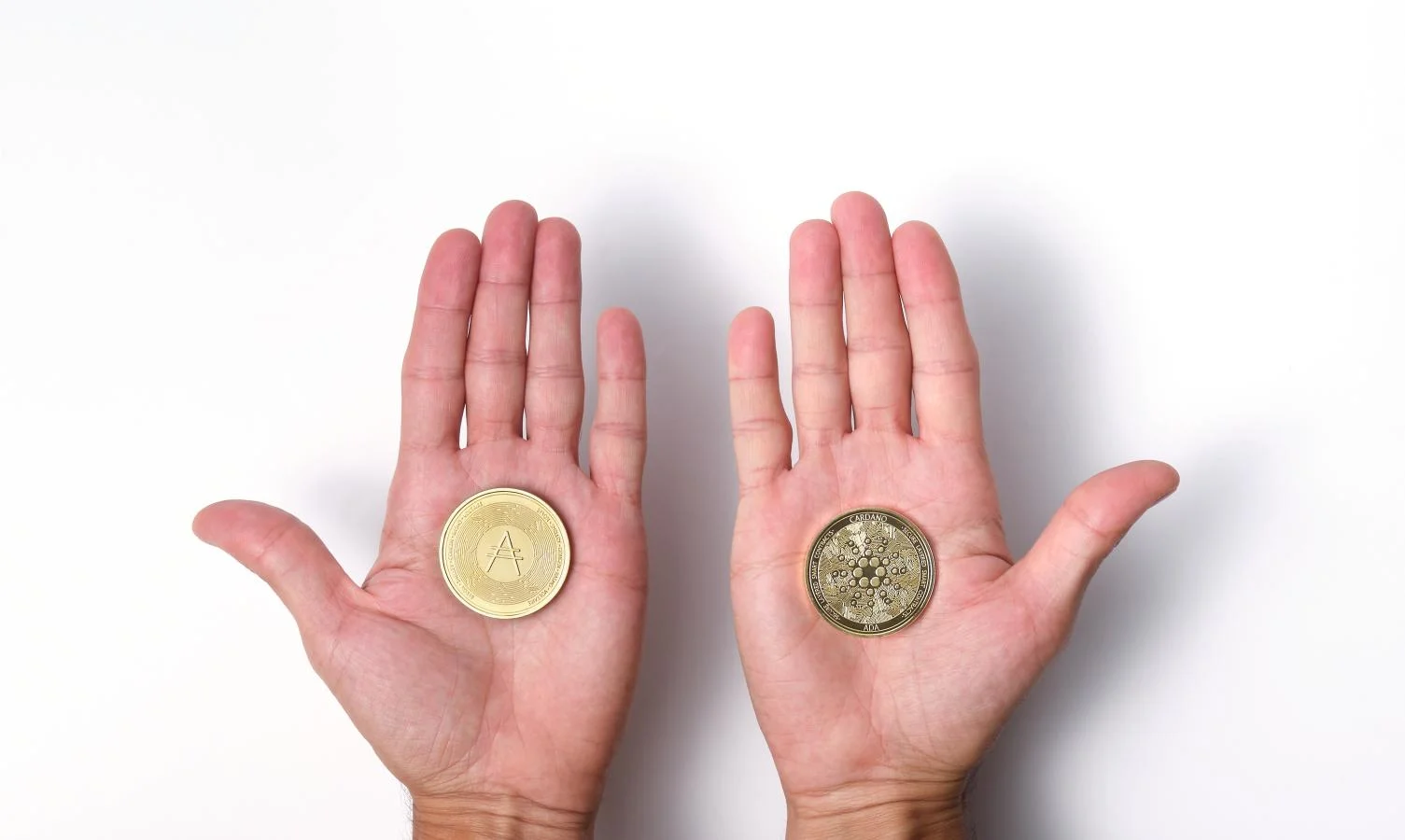
Email:
Follow us:

In the dynamic world of cryptocurrencies, where volatility is the norm, stablecoins have emerged as a reliable anchor for investors seeking stability amidst the turbulent seas of digital assets. These digital currencies, often pegged to fiat currencies like the US Dollar or backed by collateral assets, offer a haven of price stability that traditional cryptocurrencies struggle to provide. But with a growing array of stablecoins flooding the market, the pressing question arises: How can you identify the safest stablecoin?
This comprehensive guide aims to unravel the intricate web of stablecoins, offering insights into the key factors determining their safety. Whether you're a seasoned crypto enthusiast or a newcomer looking to dip your toes into the crypto waters, understanding the safety mechanisms behind stablecoins is paramount to safeguarding your investments. Join us as we explore the robustness, transparency, and credibility of stablecoins, equipping you with the knowledge to make informed decisions in the ever-evolving crypto landscape.
Stablecoins have revolutionized cryptocurrency by providing a much-needed bridge between digital and traditional financial realms. In this chapter, we delve deep into the core concepts of stablecoins, demystifying their role and significance in the crypto market. Stablecoins are a type of digital money that are crafted to keep their value steady. They're usually tied to a traditional currency, such as the US Dollar, or they can be backed by assets as security. These coins act as a reliable store of value and a means of exchange, offering a safer haven for investors and facilitating seamless transactions within the volatile cryptocurrency ecosystem. We'll explore the various types of stablecoins, including algorithmic, collateralized, and hybrid variants, shedding light on their mechanisms and use cases. By grasping the fundamentals of stablecoins, you'll be better equipped to navigate the intricate world of crypto finance and identify the safest stablecoins options for your investment portfolio.

Let's go through some of the main types of stablecoins.
Collateralized stablecoins derive their stability from assets held in reserve. These reserve assets encompass a wide range of options, such as traditional currencies like the US Dollar, digital currencies like Ethereum, or even tangible assets like gold. The stablecoin issuer maintains a peg to a specific value, often 1:1, with the chosen collateral. This ensures that the stablecoin remains stable and redeemable at its stated value. Collateralized stablecoins are prized for their transparency and security as tangible assets back the value. However, their stability relies on the reliability of the collateral and the issuer's ability to manage it effectively.
Algorithmic stablecoins operate without direct collateral backing. Instead, they use complex algorithms and smart contracts to control supply and demand dynamically. These algorithms adjust the stablecoin's issuance and burning based on market conditions, striving to maintain a stable value. Algorithmic stablecoins offer flexibility and decentralization but are subject to market volatility and require sophisticated economic models to function effectively.
Fiat-collateralized stablecoins are backed by traditional currencies, such as the US Dollar or Euro, held in reserve. Each issued fiat-backed stablecoin represents a fixed amount of the fiat currency, ensuring price stability. These stablecoins are popular due to their familiarity and reliability, making them a preferred choice for risk-averse investors.
Crypto-collateralized stablecoins are backed by cryptocurrencies held as collateral. They leverage blockchain technology to secure and verify the collateral, providing stability while remaining within the cryptocurrency ecosystem. Crypto-collateralized stablecoins offer the advantages of both blockchain technology and cryptocurrency assets.
Government-backed stablecoins are issued or guaranteed by a government entity, often representing a national currency in digital form. These stablecoins benefit from the trust associated with government backing and are generally considered highly stable and reliable. They aim to bridge the gap between traditional finance and the digital economy, providing a seamless transition for users.
Certainly, here are some of the exact factors to consider when making an informed decision about choosing the safest stablecoin.
When evaluating the stability mechanisms of a stablecoin, it's crucial to understand how it maintains its peg to a stable underlying asset. Stablecoins typically employ one of three mechanisms: collateralization, algorithmic, or a hybrid approach. Collateralized stablecoins are backed by fiat currencies, cryptocurrencies, or other commodities held in reserves. Algorithmic stablecoins, on the other hand, rely on smart contracts and algorithmic adjustments to control supply and demand, maintaining a stable value. Hybrid stablecoins combine elements of both approaches.
The choice of stability mechanism can significantly impact a stablecoin's safety. Collateralized fiat-backed stablecoins are often considered more secure due to the tangible assets backing them. Algorithmic stablecoins, while innovative, can be riskier as they depend on code and market dynamics. Hybrid stablecoins attempt to strike a balance between security and flexibility.
Investors should carefully assess the stability mechanism, considering factors like the collateral's quality, the algorithm's robustness, and the historical performance of the stablecoin in maintaining its peg.

Transparency and auditing are cornerstones of stablecoin credibility. Reputable stablecoin issuers provide clear and comprehensive information about their reserves, collateralization ratios, and issuance policies. This transparency allows investors to verify that the stablecoin is backed as claimed, instilling trust in the ecosystem.
Regular third-party audits by reputable firms ensure that stablecoin's reserves match its outstanding supply. Auditors scrutinize the issuer's financial records, collateral holdings, and smart contract code to confirm that the stablecoin remains fully backed and solvent.
Investors should prioritize stablecoins with a proven track record of transparency and regular, independent audits. This commitment to openness helps mitigate the risk of unexpected shocks or insolvency within the stablecoin ecosystem.
Regulatory compliance is a critical factor in choosing a safe stablecoin. Stablecoin projects must adhere to the regulatory requirements of the jurisdictions in which they operate to avoid legal challenges and ensure long-term stability.
Investors should verify that the stablecoin issuer complies with relevant financial regulations, such as anti-money laundering (AML) and know-your-customer (KYC) requirements. Additionally, understanding how the stablecoin handles regulatory changes and engages with authorities is crucial.
Stablecoins that proactively work to align with regulatory frameworks and maintain a transparent relationship with regulators are generally viewed as safer options. Regulatory compliance helps reduce the risk of regulatory crackdowns that could disrupt the stablecoin's operations or value.
Assessing a stablecoin's historical performance is key to evaluating its safety. A stablecoin's primary objective is to maintain a stable value, and its track record provides valuable insights into its ability to achieve this goal.
Investors should analyze how consistently the stablecoin has maintained its peg to the target asset, whether it's a fiat currency or a basket of assets. Historical data can reveal how the stablecoin performed during market volatility and economic stress.
Stablecoins with a proven history of stability, minimal price fluctuations, and reliable peg maintenance are generally considered safer choices. However, remember that past performance does not guarantee future results, and other factors like changes in the collateral pool or regulatory shifts can affect stability.

Liquidity and market presence are crucial factors when assessing the safety of a stablecoin. Liquidity ensures you can easily buy or sell the stablecoin at the desired price without causing significant price fluctuations.
A stablecoin with a market cap and high liquidity will likely maintain its peg and offer a stable trading experience. It also indicates a robust ecosystem with a broad user base and extensive market support.
Investors should consider the stablecoin's trading volume, availability on major cryptocurrency exchanges, and adoption within the broader crypto community. Stablecoins that enjoy wide usage and have a strong market presence are generally safer options, as they are less susceptible to sudden price swings and liquidity crises.
Effective risk management practices are essential for the long-term safety of a stablecoin. Investors should investigate how the stablecoin issuer addresses potential risks, such as collateral shortfall or smart contract vulnerabilities.
Understanding the issuer's risk mitigation strategies, including collateral diversification and liquidation mechanisms. Additionally, consider whether the stablecoin project has a contingency plan for unexpected events and emergencies.
Stablecoins backed by robust risk management protocols and well-defined strategies for handling adverse scenarios are generally safer. These measures help protect the stablecoin's stability and minimize the risk of investor losses.
Diversification strategies are vital for managing risk in decentralized stablecoins, too. Rather than relying solely on a stablecoin, consider spreading your holdings across multiple stablecoins with different stability mechanisms and issuers.
Diversification can help mitigate the risk of a single stablecoin's failure or a sudden peg loss. It also allows you to take advantage of varying interest rates and yields offered by different stablecoins.
Investors should carefully select a mix of stablecoins that align with their risk tolerance and investment goals. Diversifying across stablecoins with strong stability mechanisms, transparent practices, and regulatory compliance can enhance the safety and resilience of your cryptocurrency portfolio.

To identify the safest stablecoin in the crypto market, it's essential to be vigilant and attuned to potential red flags that might signal instability or risk. While not all stablecoins are designed to provide a secure and predictable value, certain warning signs should not be ignored. Here, we explore some key red flags to watch out for when assessing stablecoins:
Recognizing these red flags is crucial for safeguarding your investments in the crypto market. Due diligence and a critical assessment of stablecoins can help you make informed decisions and minimize the risk of choosing an unstable or unreliable digital asset.
In the ever-evolving landscape of the global cryptocurrency economy, the need for a reliable and versatile payment solution has never been more crucial. UniPayment emerges as the answer, offering businesses a seamless path to accepting and managing crypto payments.
With its modern infrastructure and multifunctional capabilities, UniPayment empowers enterprises to tap into the vast potential of the crypto community, making it easier than ever to embrace the future of finance. Join us as we explore the features, benefits, and possibilities that UniPayment brings to businesses looking to thrive in the expanding world of digital currencies.
Start Receiving the Payments with UniPayment: Your clientele will be able to choose from a wide array of cryptocurrencies for their payments. UniPayment accommodates transactions through all prominent cryptocurrencies, including Bitcoin, Ethereum, Ripple, and many others. Our platform seamlessly converts the product's fiat price into the chosen cryptocurrency equivalent, guiding them effortlessly to the payment gateway.
Withdrawing Your Earnings in Fiat: If you prefer not to retain your earnings in cryptocurrency, UniPayment offers a straightforward solution. You can swiftly convert your cryptocurrency holdings into supported fiat currencies and receive the withdrawn amount directly to your local bank account without any unnecessary complications.
Ready to embrace the future of payments? Join Unipayment today and harness the power of cryptocurrency for your business!